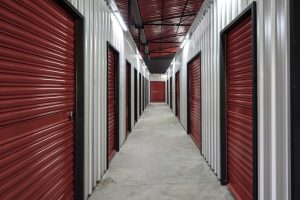Fire is helpful for many things, and so are several chemicals. But just like fire, if chemicals aren’t used properly or if accidents happen, they can lead to major harm and even be fatal. It may be necessary to evacuate the region or take other actions to avoid environmental damage, depending on the nature of the threats.
How to Deal With Hazardous Spill
There are four primary actions to take when handling spills, which apply regardless of the spill’s extent. Although the specific solutions related to each stage and the persons responsible for dealing with each step might differ, these steps serve as the basis of a spill response.
1. Inform Others
Even if it doesn’t seem serious, contacting biohazard & virus cleanup services is the initial thing you should do if there’s a spill. Remove injured or contaminated people from the area and take them somewhere secure.
You can do the cleaning alone if the spill is going to spread slowly or cause harm to individuals or the environment in the area. Still, it’s crucial to inform authorities and clean up the spill using the right equipment. However, don’t try to clean up the spill yourself if it’s hazardous. Try to stop vapors, dust, or liquids from spreading, and immediately get rid of the waste to clean up a spill properly.
2. Control the Spill
The goals of this action consist of preventing the spill from becoming worse. Take whatever steps are needed to contain the leak and prevent it from aggravating. The employees should quickly put on the proper protective equipment for the chemical and the level of risk entailed. For some situations, this will need to wear masks and other forms of respiratory protection.
Turn off all heat sources or ignition when possible. If increasing airflow can effectively dissipate the odor, do so. If the fumes are dangerous, it is usually advised to isolate the area by shutting windows and doors after leaving the workplace. Any spill of dangerous material is a severe incident. You need to contact experts in product transfer, ground fluid, solid recovery, and extensive environmental and disaster cleanup and restoration.
3. Contain the Hazard
Right after the initial issue has been fixed, contain the spill to prevent it from contaminating more areas. Usually, this involves containing the spill to a small area using an absorbent product or neutralizer, though it does vary depending on the substance and situation. Spread the materials around the spill’s perimeter first to contain the situation, and after that, move inward.
As much as possible, seal any floor drains or other access points that could let the spilled substance make its way to non-hazardous areas. If you should leave the place during this process, put caution tape around the spill, create a dike to direct the material, or utilize a spill sock to prevent others from getting into contact with it. Click here to learn more about the process.
4. Clean Up the Spill and Damage
Materials used to clean up or deal with the spill must be gathered and thrown away properly. Smaller spills could be contained in a plastic bag; larger ones might need plastic containers or drums. You must dispose of cleanup tools like brooms and dustpans when no longer used. You need to place a caution label on anything that meets the criteria for dangerous materials and then dispose of it following the laws stated by your community.
Employing a hazardous waste spill cleanup company is the safest and most effective solution for handling any spill. Try seeking experts that can clean up both hazardous and non-hazardous spills. You may refer to websites like puroclean.com for more detailed information.








